14. Nightmare Alley (1947)
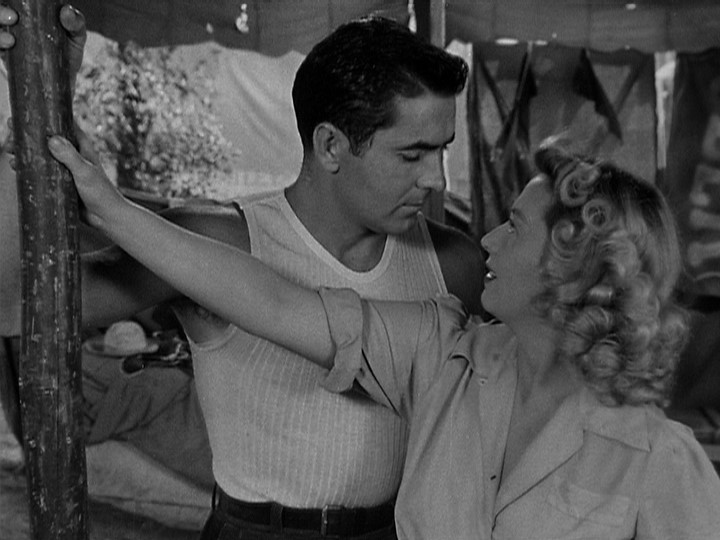
By 1947, matinee idol Tyrone Power had long proved himself a star, what he now aimed was to show the world, and particularly his studio, he was also a capable actor.
For that, Power chose a daring project based on William Lindsay Gresham’s novel Nightmare Alley. In the film, he is cast against type as the supposed mentalist Stanton Carlisle whose deceitful ways and overreaching ambition lead to his ultimate downfall.
With a large budget and star cast, including Joan Blondell, Nightmare Alley is a rare case of Film Noir, seeing its production has very few in common with those distinctive B pictures that made the movement so famous. Edmund Goulding’s movie, instead, is both impeccably produced and greatly acted, but make no mistake, its dark and twisted tale is as Noirish as it gets.
The German expressionism influence on lighting and set design is also quite evident and it greatly contributes to the haunting and decadent environment of the film. With that said, it doesn’t take long for one to get a feeling Stanton’s evil fate is irrevocably settled.
Misinterpreted upon its original release, Nightmare Alley has slowly been building a reputation as an outstanding example of Film Noir and it certainly makes you wonder how far Tyrone Power could have gone if Twentieth Century Fox had let him show acting skills on more occasions.
15. Key Largo (1948)
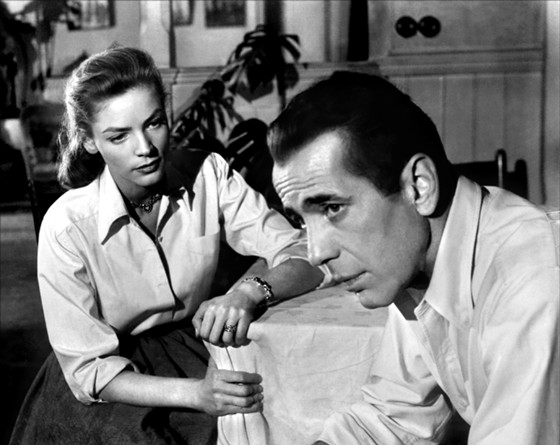
Of their four-movie partnership iconic on and off-screen couple Humphrey Bogart and Lauren Bacall have two undisputed classics to their name: Howard Hawks’ To Have and Have Not and The Big Sleep. Sadly, 1948’s outstanding Film Noir Key Largo hasn’t enjoyed the same level of fame.
Major Frank McCloud (Bogart) decides to visit the family of a deceased old friend. He surprisingly finds the widow ( Bacall) and father (Lionel Barrymore) hostages to a gang led by Johnny Rocco, a neurotic and wild man ( Edward G. Robinson). As a tropical storm comes near, McCloud tries his best to keep the neurotic Rocco from going on a killing spree.
Directed by master John Huston, this is plain old good storytelling with some excellent performances from all involved. Noir fans favorite Claire Trevor won an Academy Award as Robinson’s alcoholic lover, who decides to help the suffering captives after getting tired of being treated badly.
A safe-bet not only for Bogie and Bacall fans, but for all who appreciate classic filmmaking, Key Largo is an intense and thrilling ride that will have you on the edge of your seat.
16. Letter from an Unknown Woman (1948)
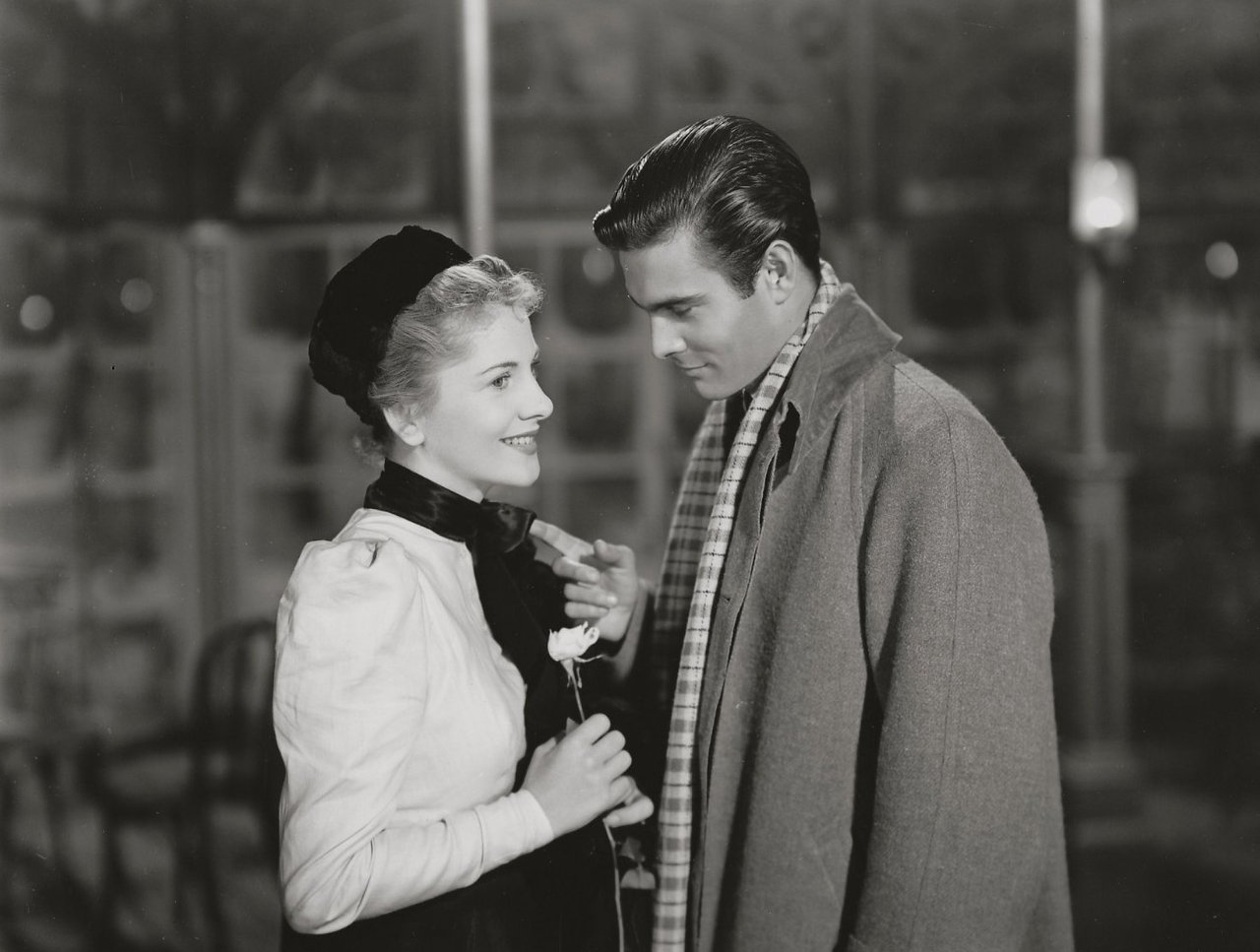
Director Max Ophüls, best remembered for his European masterpieces The Earrings of Madame de… and Lola Montès, presents a gripping tale of lost love set in 1900’s Vienna.
Arguably his best American film, Letter from an Unknown Woman tells of a young girl (Joan Fontaine) in love with a philandering pianist (Louis Jourdan). The story, told in flashback, starts as the leading man is about to flee a duel, but stops upon receiving a letter from an apparent stranger.
Fontaine always gave her best performances when playing ingénues with maturing character acts (e.g. Rebecca and The Constant Nymph), so it’s no surprise she does a marvelous job as the suffering Lisa Berndle; perhaps a superior performance than her Oscar-winning role in Hitchcocks’s Suspicion.
Handsome French star Louis Jourdan is quite competent as well as the rascal Stefan Brand, but this is truly Fontaine’s picture, her only rivals for applause are Ophüls’ elegant directing and the exquisite work by the art department.
The picture, although unquestionably romantic, is also quite sober when leading with the transience of passion, as the delusional Lisa from the beginning finds contrast in the harsh reality of Stefan’s ways. A truly one-of-a-kind film shot by a master of period love tales, it certainly deserves to find a broader audience.
17. Caged (1950)
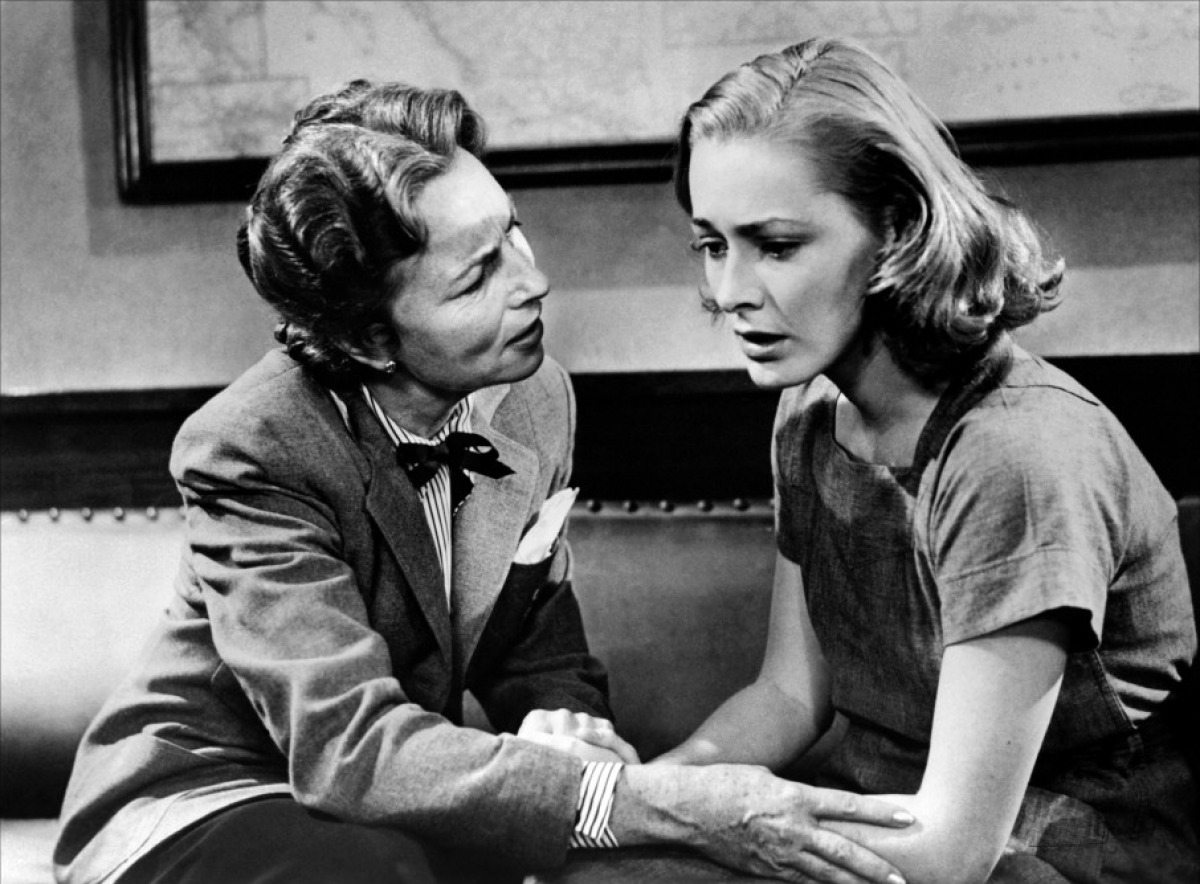
A women’s prison drama with heavy Film Noir cinematography, Caged features Eleanor Parker, from The Sound of Music fame, in an Oscar-nominated performance, as a young girl (Marie Allen) who loses her innocence in the terrifying environment of a 1950’s penitentiary.
Parker’s character transformation is the highlight of the film: Marie goes from being a trusting adolescent to a hardened and scornful woman in a completely believable way that not many of her peers would be able to accomplish.
The actress was in fact, so immersed in her role, she actually shaved her head for a shocking scene where Marie is punished for a supposed transgression. A brave and rare event in the studio-system era where actresses usually had to be at the top of their game of physical beauty to get roles.
In this fashion, it becomes difficult to understand the Academy’s decision to award Judy Holliday with the 1951 Oscar for Best Actress, especially since Parker’s tour-de-force act was not the only brilliant turn of the year, which also had Gloria Swanson’s Norma Desmond and Anne Baxter and Bette Davis’s unforgettable work in All About Eve.
18. The Lusty Men (1952)
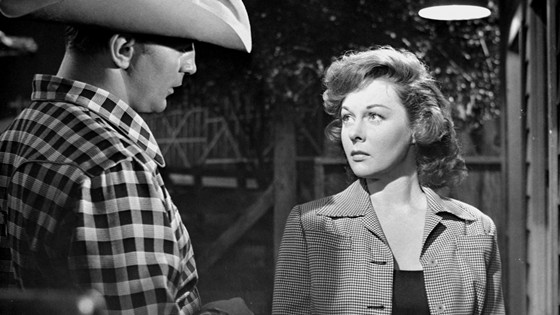
The ending keeps it from being a masterpiece and the ghastly title from being better known, but The Lusty Men is quite an outstanding film about rodeo life in the 1950’s.
A character-driven story with Nicholas Ray’s exemplary direction, it revolves around an ex-rider who befriends a cowhand and his wife and soon convinces the man he can turn him into a rodeo sensation. Robert Mitchum is the worn-out rider and the couple is played by Arthur Kennedy and Susan Hayward.
What initially seems a great deal for both ends soon causes great conflict when Hayward and Mitchum inevitably become attracted and Kennedy finds out he likes rodeo life after all, in spite of having promised his reluctant wife it would only be a temporary job.
As realistic as it is entertaining, The Lusty Men also has in its favor some great footage of rodeo riding and the beautiful western America scenery. A somewhat difficult film to find, it is however completely worth the effort.
19. Love me or Leave Me (1955)
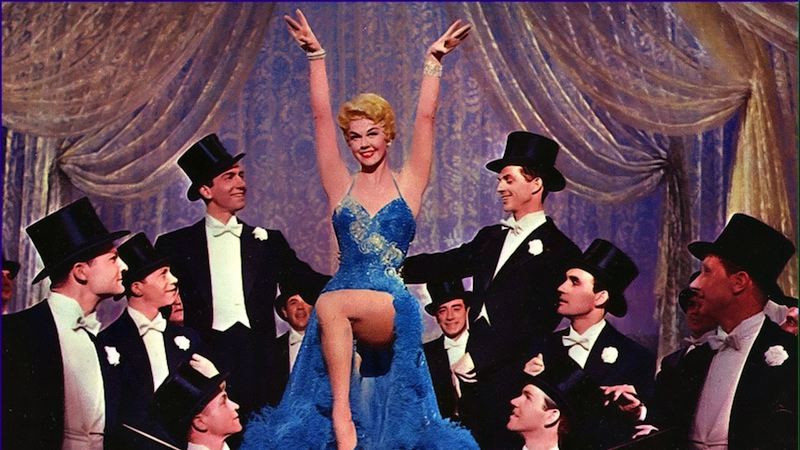
1920’s Chicago : A kept woman, rising her way to the top as a jazz singer, thanks to her gangster husband’s influence; lot’s of drinking and provocative clothing involved, this is definitely not your ordinary Doris Day picture.
Beside James Cagney, Day took on the challenge of playing Ruth Etting in a somehow fictionalized account of her career and turbulent private life. A major departure from her rom-com roles, the singer-actress gives probably her most impressive performance ever. Her natural and instinctive acting style gives truth to the part and she also scores big downplaying a character that could have easily become a caricature of the real thing.
Cagney, in his last gangster portrayal on the screen, is powerful and domineering as Marty ‘The Gimp’ Snyder. An abusive, jealous man that scares by the sheer intensity of his feelings.
An improbable pairing, the main couple is pure tension and passion on the screen. Although, it has some great musical numbers, such as Day’s renditions of the title song and Ten Cents a Dance, director Charles Vidor was clearly going for a darker atmosphere, such as in his Film Noir classic Gilda, and it certainly proved to be the right choice.
20. The Bad and the Beautiful (1952)
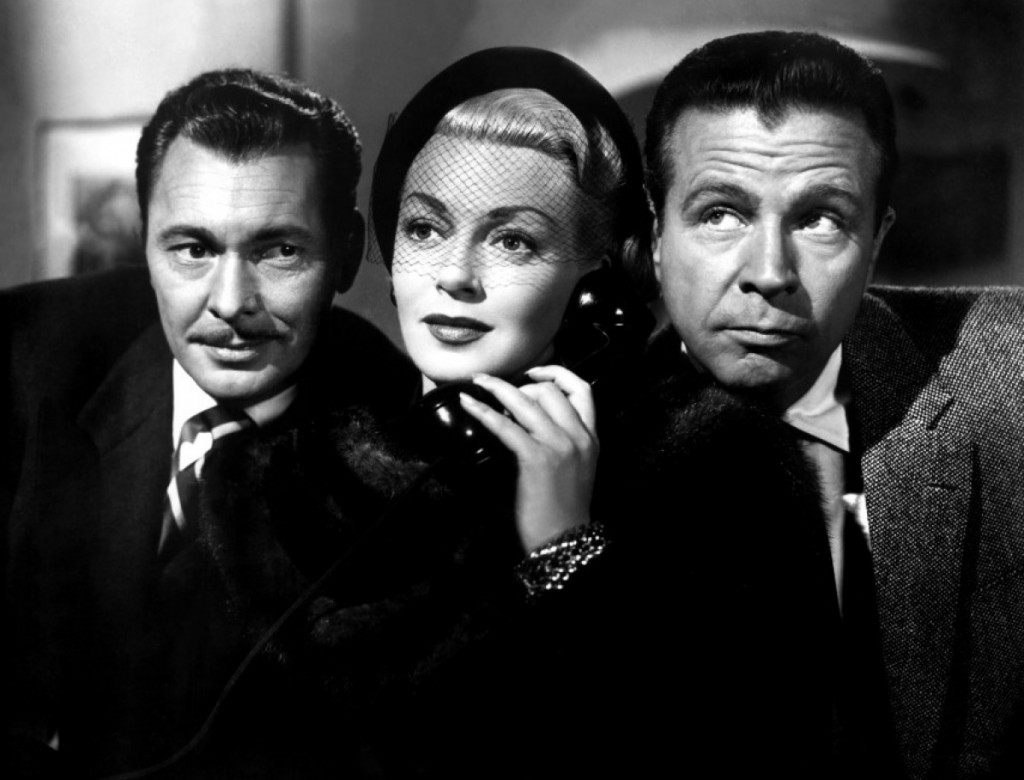
Although it won five Oscars in 1953, the Vincente Minnelli drama about the Movie Industry is sadly not regarded in the same light as his celebrated musicals.
A dark tale about the unglamorous aspects of Old Hollywood life, Minnelli centers his story on a ruthless producer named Jonathan Shields ( Kirk Douglas). Through flashbacks, three of his former acquaintances – an actress (Lana Turner), a novelist ( Dick Powell) and a director ( Barry Sullivan) – disclose to a studio boss ( Walter Pidgeon) how Shields has supposedly ruined their lives.
Filled with great performances by the leads and supporting cast, including Gloria Grahame, who won an Academy Award for her turn as Powell’s vivacious wife, and Gilbert Roland as a screen’s fictional Latin lover, The Bad and the Beautiful may not be on the same level as Sunset Blvd, when it comes to “movies about movies”, but it does play out as great entertainment while bravely exposing a seldom seen side of Tinseltown during the studio era.
Author Bio: Priscilla Signorelli is a 23-year-old Brazilian Film Graduate. She’s obsessed with everything Classic Hollywood, but will gladly watch anything from Ingmar Bergman to Marvel movies. Her dream is to work as a Film Historian and share her passion for old movies with the world.